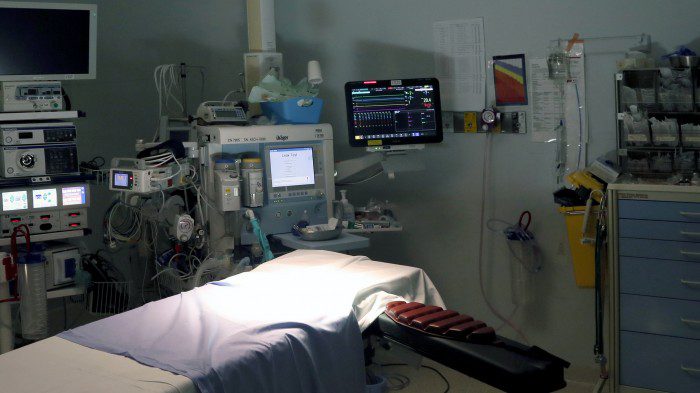Investing in a new anesthesia machine is a major decision that carries high stakes for any healthcare facility and its patients. With the right purchase, a facility can equip its operating rooms and procedural suites with reliable, efficient anesthesia delivery and seamless patient monitoring for years. Poor choice, however, can saddle a facility with frequent service headaches, unnecessary costs, and technology that lags behind current best practices.
This definitive buyer’s guide examines the most critical factors to weigh when selecting and purchasing an anesthesia machine. It explores the latest technology innovations, patient safety considerations, clinical workflow needs, and cost factors today’s buyers must evaluate.
The goal is to give you a comprehensive overview of the criteria that should guide your anesthesia machine purchasing decision, with an emphasis on selecting a machine that fosters the highest levels of patient safety during anesthesia delivery and monitoring.
Whether you are looking to upgrade older equipment or buy your first anesthesia machine, this discussion will equip you with the knowledge to choose the optimal solution for your facility and patients.
Understand the Importance of Anesthesia Machines in Patient Care and Safety

During surgery, anesthesia machines serve an indispensable role in the care and safety of patients undergoing invasive medical procedures. These sophisticated devices enable anesthesiologists to precisely control the dosages of anesthesia gases like sevoflurane or desflurane to induce unconsciousness in patients. This anesthesia delivery is essential for preventing pain, blocking memory formation, and enabling invasive surgery.
Beyond anesthesia administration, these machines provide continuous monitoring of vital physiological parameters including heart rate, blood pressure, oxygen saturation, respiration rate, and body temperature. The real-time tracking of this data allows anesthesiologists to make immediate adjustments to anesthesia depth and take appropriate actions to maintain normal physiology throughout procedures. Sudden changes in metrics like blood pressure or heart rate can signal underlying issues and enable rapid medical intervention.
Additionally, anesthesia machines have built-in ventilation capabilities to facilitate breathing and maintain healthy oxygenation when patients cannot breathe independently under anesthesia. Features like no-flow protection prevent anesthesia gas delivery errors that could lead to hypoxia. Backup oxygen systems provide fail-safe protection as well.
By keeping patients adequately anesthetized and vigilantly monitoring critical vitals, anesthesia machines play an indispensable role in mitigating intraoperative risks and enabling safe surgery. Their capabilities make them a central component of any operating room environment and essential for patient care, safety, and optimal surgical outcomes.
The Major Types of Anesthesia Machines
Anesthesia machines can be categorized into several main types based on their gas delivery modes, functionality, and intended clinical applications:
- Continuous Flow Anesthesia Machines – These basic machines provide a steady flow of anesthetic gas mixtures. Flow rates and gas composition must be manually adjusted. They offer basic safety features and are a cost-effective option well-suited for lower acuity surgeries.
- Electronic/Digital Anesthesia Machines – These technologically advanced systems allow anesthesiologists to precisely adjust gas flow and concentrations through electronic interfaces and automated delivery. This improves ease of use and enables accurate anesthesia dosing.
- Closed-Loop Anesthesia Delivery Systems – These automated systems utilize feedback loops to self-regulate anesthetic agent delivery to achieve target concentrations set by the clinician. This allows a more consistent depth of anesthesia.
- Portable/Compact Anesthesia Machines – Optimized for transport and flexibility, these machines contain core anesthesia capabilities in a slimmer footprint. Ideal for ambulatory settings and remote locations.
- MRI-Compatible Anesthesia Machines – Engineered with non-ferrous metals so operation is not impacted by strong magnetic fields during MRI procedures requiring anesthesia.
- Integrated Anesthesia Workstations – Combine anesthesia delivery with patient monitoring and other capabilities in a single platform. Support extensive surgical procedures.
Considering clinical workflow needs, operating room space, patient populations, procedure types, and budget constraints can help determine the optimal anesthesia machine type for a given healthcare facility.
What to Consider When Buying an Anesthesia Machine?
Selecting the right anesthesia machine is a crucial decision for any medical facility. This investment impacts patient safety, optimizes clinical functionality, and represents a major financial commitment. As a healthcare leader, you must weigh several vital factors when acquiring an anesthesia machine. This comprehensive guide examines the key considerations to help you make the best choice for your facility.
Optimize Ventilation with the Ideal System
The anesthesia machine’s ventilation system serves as the backbone for delivering oxygen and anesthetic gases during procedures. Facilities today predominantly use two types of ventilation systems:
- Single-circuit piston ventilators utilize a computer-controlled piston to push gases into the breathing circuit. This generates the positive pressure required to deliver the air/gas mixture directly into the patient’s lungs.
- Double-circuit bellows ventilators employ pressurized gas to fill bellows on inspiration. As the bellows compress, they propel gases into the breathing circuit and the patient’s lungs. On expiration, the bellows re-expand, releasing driving gas through an exhaust valve.
When selecting a ventilation system, consider efficiency, safety, maintenance, and the needs of your patient population. Those caring for infants or neonates may prefer the sensitivity of a piston ventilator, while a bellows system offers time-tested reliability.
Prioritize Key Safety Features
Maintaining patient safety remains the foremost priority in anesthesia delivery. Be sure your anesthesia machine includes these fundamental safety features:
- Oxygen failure protection devices prevent hypoxia if the oxygen supply becomes depleted. These systems activate alarms and switch to an alternative oxygen source.
- Pressure relief valves quickly vent excess pressure in the breathing circuit to avert barotrauma.
- Gas monitoring capabilities allow staff to continually regulate the composition of inhaled and exhaled gases. This helps avoid critical imbalances.
- Visual and audible alarm systems alert clinicians to any parameter deviations or equipment issues that could impact patient well-being.
Evaluate Functionality Based on Procedural Needs
The ideal anesthesia machine matches your facility’s specific requirements across various procedures and patient populations. Assess key functions like:
- Ventilation modes: Machines that offer controlled, assisted, and spontaneous ventilation provide maximum flexibility.
- Integrated monitoring: Built-in monitoring streamlines the assessment of oxygenation, ventilation, blood pressure, and other parameters.
- Vaporizer compatibility: Ensure the machine accommodates your vaporizers for safe delivery of volatile anesthetics like sevoflurane or isoflurane.
- User-friendly interface: An intuitive, ergonomic interface minimizes errors and enhances clinical efficiency.
Factor in Size, Mobility, and Workflow
An anesthesia machine’s size and mobility should align with your procedural spaces. In large operating rooms, size and mobility may be insignificant. But facilities with smaller rooms or a need to frequently relocate the machine should prioritize compact, mobile units. This facilitates smooth workflow while still providing complete functionality.
Assess Built-in Storage and Accessories
Storage capabilities also impact efficient anesthesia workflow. Models with ample onboard storage for supplies like circuits, masks, and monitors simplify setup. Facilities that require frequent room-to-room movement should consider machines with built-in suction systems or suction regulator mounting. This allows the anesthesiologist to maintain ventilation and monitoring during transport.
Compare Costs and ROI
Anesthesia machines require serious capital investments. As you evaluate options, analyze factors like:
- New vs. refurbished: While refurbished units cost less upfront, they may become outdated faster. Consider total ROI over the machine’s usable lifespan.
- Financing: Flexible financing options like leasing facilitate acquiring newer technology while managing costs. This enables improved patient experiences and operational efficiency.
Select the Best Anesthesia Machine for Your Needs
In the end, the anesthesia machine you select should elevate safety, satisfaction, and outcomes across your facility. Our experts at Mindray understand your priorities. We offer in-depth guidance in choosing the anesthesia machine that optimizes functionality for your setting. Contact us today to start the journey toward advancing your anesthesia delivery. Your patients and staff will benefit from our insights and solutions.
Optimize Anesthesia Machine Size and Mobility for Clinical Workflows
Assessing Your Facility’s Requirements
Before embarking on the purchasing process, it’s crucial to conduct a comprehensive assessment of your facility’s unique needs. This evaluation should encompass various factors, including the types and quantities of surgical procedures conducted, patient demographics, available physical space, and other pertinent considerations. Undertaking this analysis, you can effectively determine the most fitting size and mobility specifications for the anesthesia machine that aligns with your facility’s specific demands.
Delving into Size Considerations
Anesthesia machines come in an array of sizes, ranging from compact, portable units to larger, more intricate models. The dimensions of the machine are contingent on multiple variables, including the number of gas and vaporizer positions, breathing systems, and auxiliary gas outlets, as well as the inclusion of advanced monitoring and support features.
1. Portable Anesthesia Machines
For facilities engaged in procedures across various locations or constrained by limited space, the portable anesthesia machine emerges as an optimal solution. These units boast a compact footprint, lightweight design, and effortless transportability. Characterized by minimalist design, they house fewer gas and vaporizer positions and offer streamlined monitoring capabilities.
2. Stationary Anesthesia Machines
Facilities with designated operating rooms or fixed locations stand to benefit from the expanded functionality and versatility furnished by stationary anesthesia machines. This category boasts additional gas and vaporizer positions, advanced monitoring capabilities, supplementary breathing systems, and augmented storage capacity. Stationary machines are tailor-made for managing higher patient volumes and more intricate procedures.
Navigating Mobility Considerations
The pivotal element of mobility plays a defining role in the usability and convenience of anesthesia machines. The following mobility facets warrant careful consideration:
1. Casters and Wheels
Prioritize the selection of anesthesia machines equipped with high-caliber casters or wheels. Opt for smooth-rolling casters that are lockable, facilitating seamless maneuvering within the facility. Machines featuring robust, durable wheels contribute to stability during transportation.
2. Integrated Handles
Incorporate your preference for anesthesia machines with integrated handles that enhance maneuverability. These handles should be ergonomically designed and strategically positioned to facilitate effortless transport.
3. Streamlined Cable Management
Efficient cable management stands as a fundamental aspect of mobility optimization. Anesthesia machines featuring well-structured cable routing systems and integrated storage compartments mitigate the risk of tripping hazards and expedite relocation from one location to another.
Prioritize Safety and Compliance
When acquiring an anesthesia machine, the paramount concern revolves around patient safety and adherence to regulatory standards. Emphasize the procurement of machines that adhere to all pertinent safety guidelines, be it those stipulated by regulatory entities such as the FDA or local health authorities. Rigorously ensure that machines undergo regular maintenance and calibration, guaranteeing consistent optimal performance.
Embrace Future-oriented Planning
The integration of future-oriented planning is of utmost importance when making an anesthesia machine investment. Foresee and evaluate the growth potential of your facility, as well as the likelihood of shifts in surgical procedures or patient volumes. Opting for a scalable anesthesia machine primed to adapt to evolving needs safeguards against premature replacements and translates into substantial long-term cost savings.
Bottom Line
Investing in a new anesthesia machine is a major decision that can significantly impact patient outcomes and safety for years to come. By taking the time to carefully evaluate your facility’s needs and research the latest technology innovations and safety features available, you can make an informed anesthesia machine purchasing choice.
When comparing different models and manufacturers, patient safety should always come first. Look for key safety capabilities like integrated monitoring, redundant oxygen delivery, no-flow protection, and comprehensive alarm systems. Thoroughly vetted safety testing and certifications are also essential.
Beyond focusing on safety, also ensure the machine matches your clinical workflows, offers needed ventilation modes and adjustments, and provides intuitive machine-user interfaces, and flexible connectivity. Factor in costs like maintenance and training over the machine’s lifespan.
With patient care and safety guiding your decision process, you can secure the best anesthesia machine investment for your facility. This will provide clinicians with a reliable platform to deliver the highest caliber of anesthesia for years while optimizing patient outcomes. Your organization’s commitment to patient safety starts with selecting the right anesthesia equipment. By taking the time to make a careful, well-informed decision, you can uphold your mission of delivering the best possible care.
Frequently Asked Questions
What are the most important safety features to look for in a new anesthesia machine?
Key safety features include oxygen failure prevention systems, integrated patient monitoring, no-flow protection, agent identification, evacuation systems, and redundant alarms. Prioritize machines with extensive safety testing records.
Should I buy a new or refurbished anesthesia machine?
While refurbished units are cheaper, new machines come with the latest safety innovations and longer working lifespans. New purchases better ensure patient safety.
How frequently should anesthesia machines be serviced and calibrated?
To maintain safety and performance, anesthesia machines should be serviced at least yearly. Calibrate gas analyzers and vital sign monitors per the manufacturer’s recommendations, at minimum biannually.
Does anesthesia machine size matter for safety?
Larger machines allow more safety features and backup systems. But proper operation and maintenance are most crucial, so skilled staff should be trained on whichever size machine is chosen.
How can I estimate the total cost of a new anesthesia machine?
Factor in the upfront purchase price, expected maintenance costs, parts/accessory costs, staff training expenses, and projected lifespan. Consider financing options if needed to purchase advanced safety-optimized models.
What certifications should an anesthesia machine have?
A: Seek machines certified by ISO, AAMI, CE Marking, CSACanada, and FDA 510(k) clearance. These demonstrate adherence to electrical, EMC, and anesthesia delivery safety standards.










